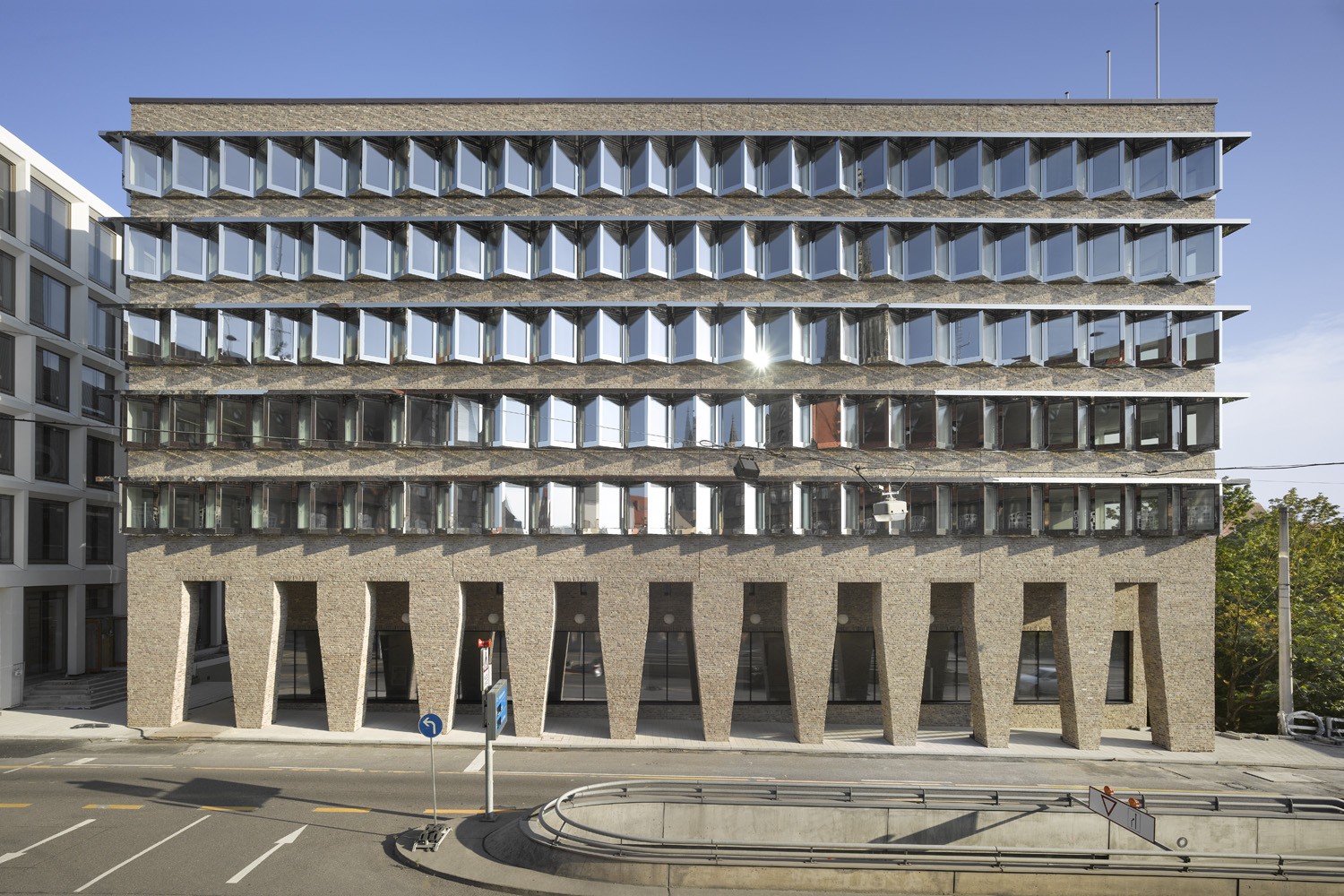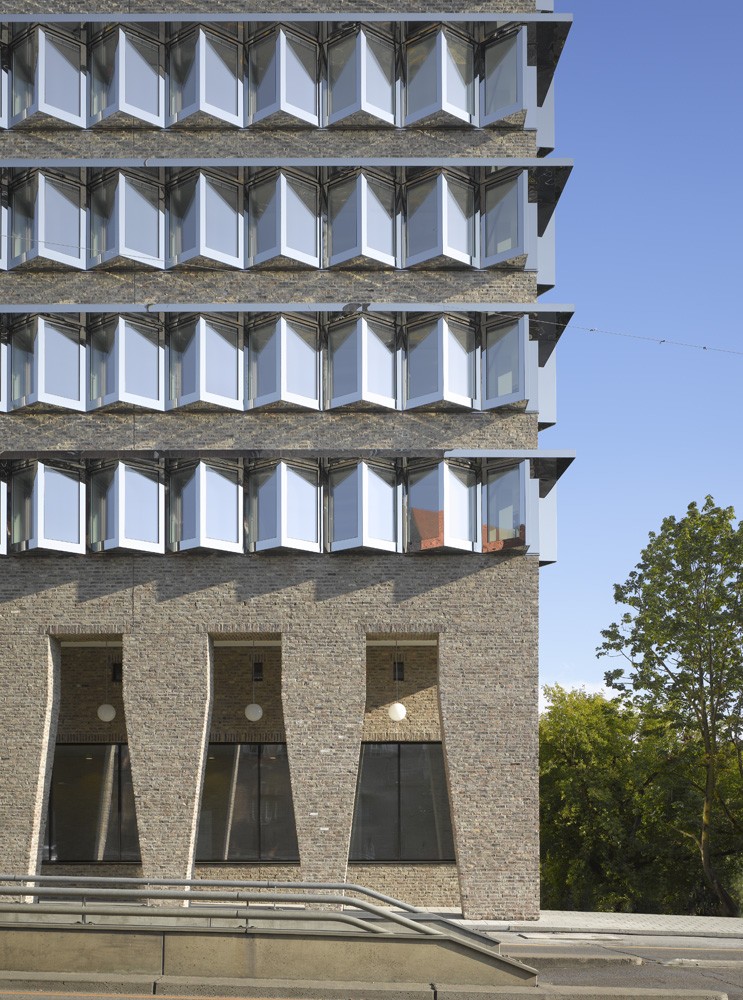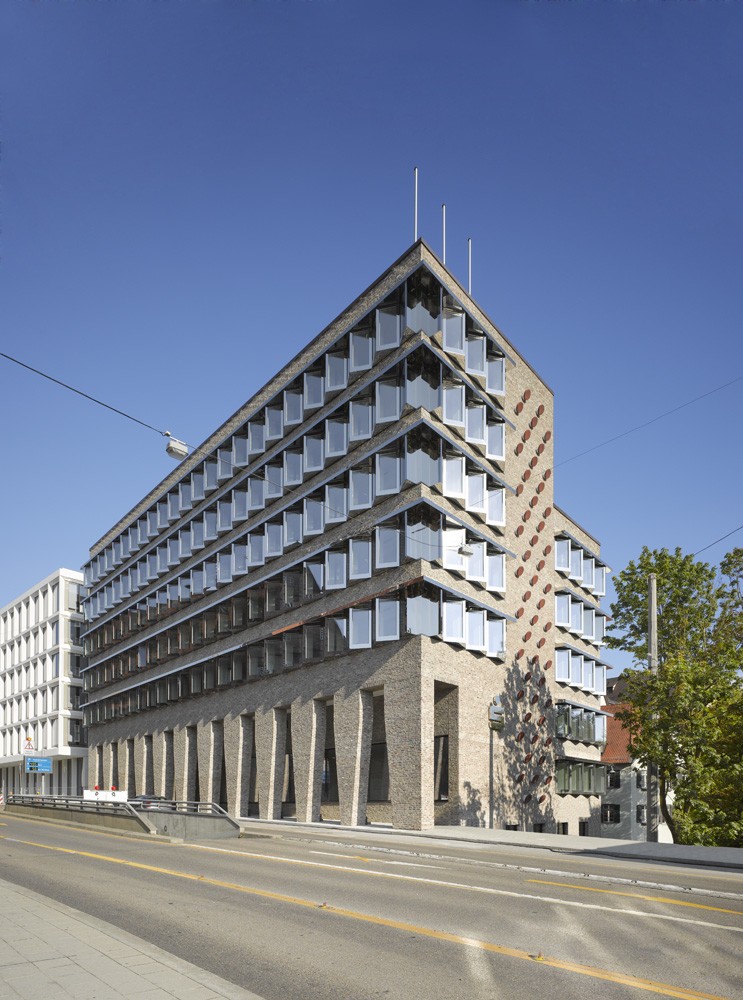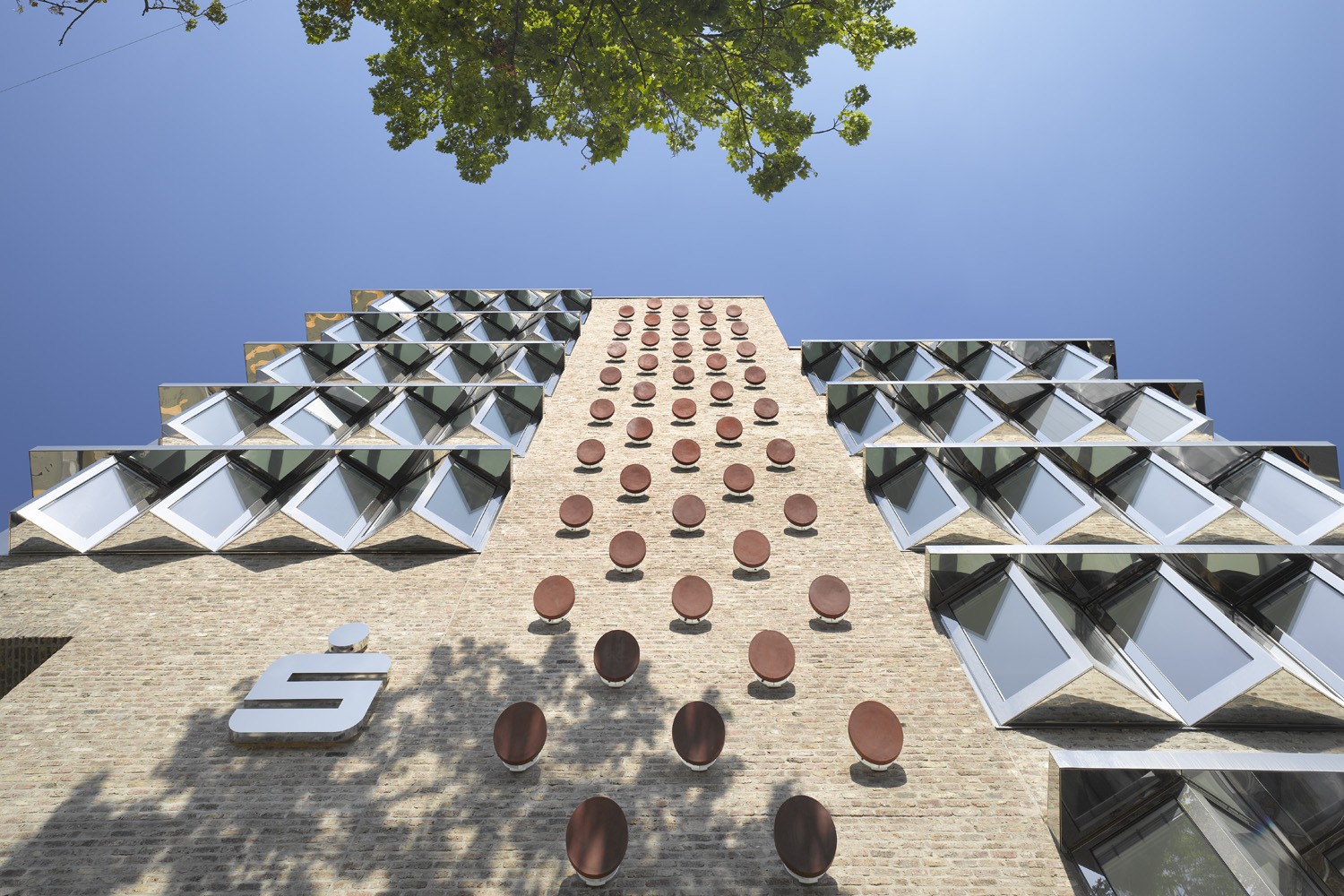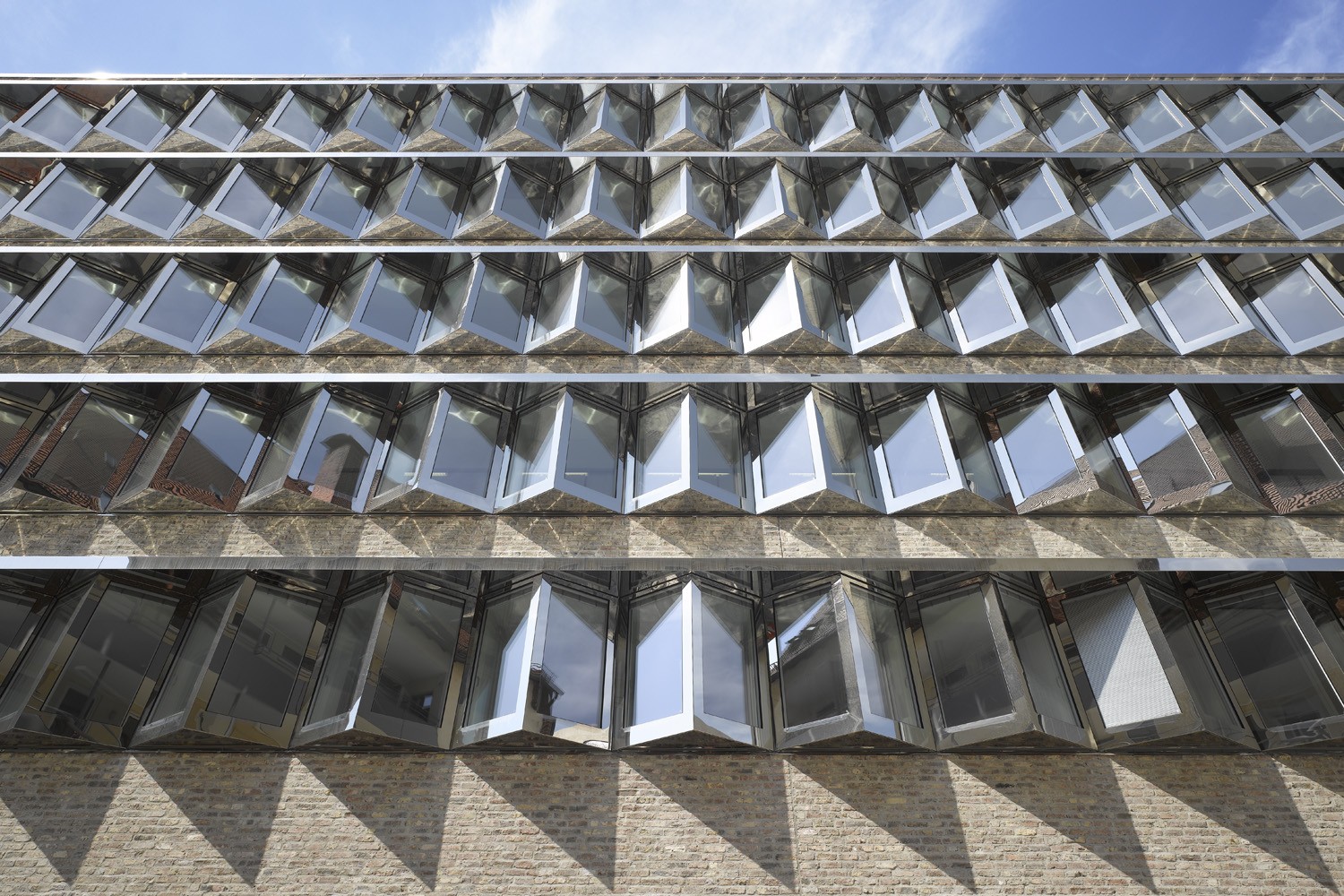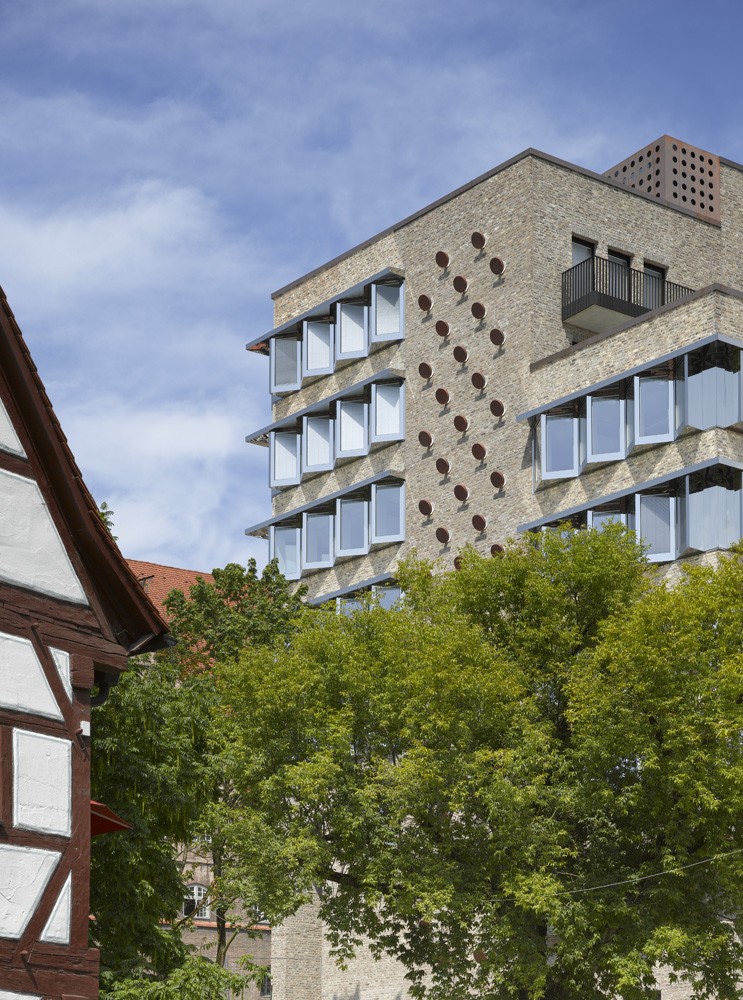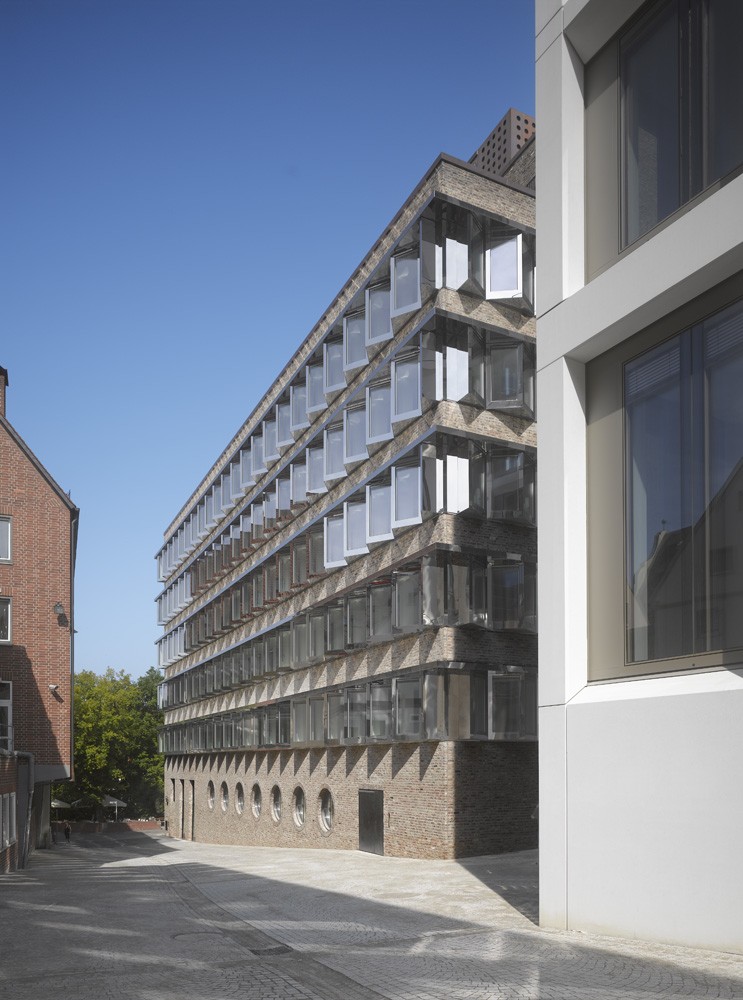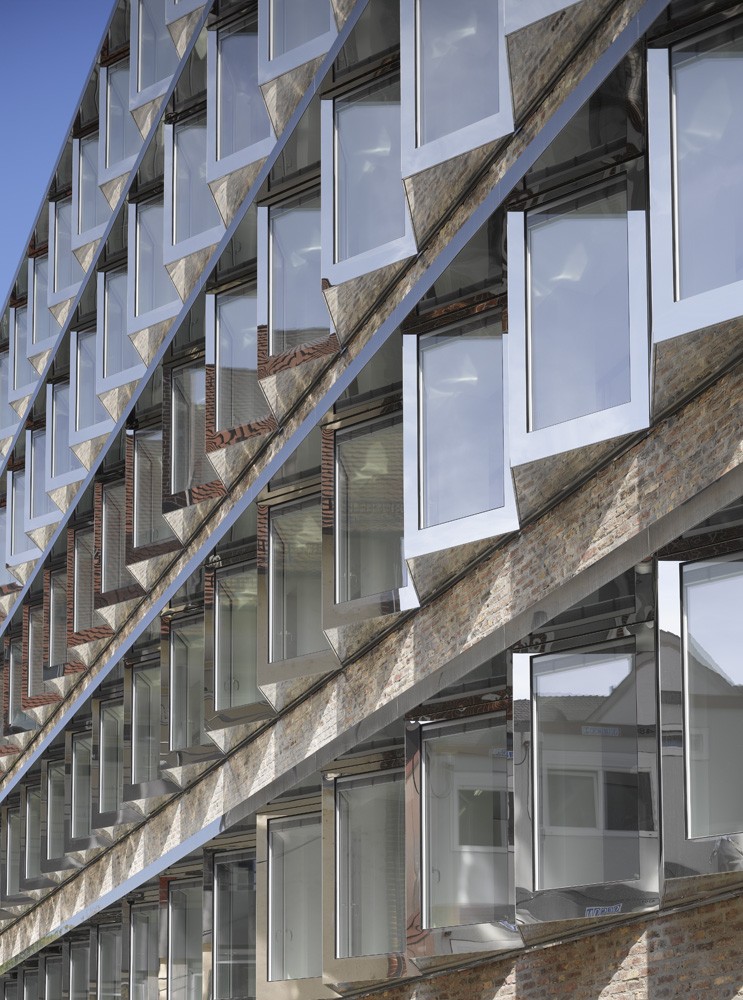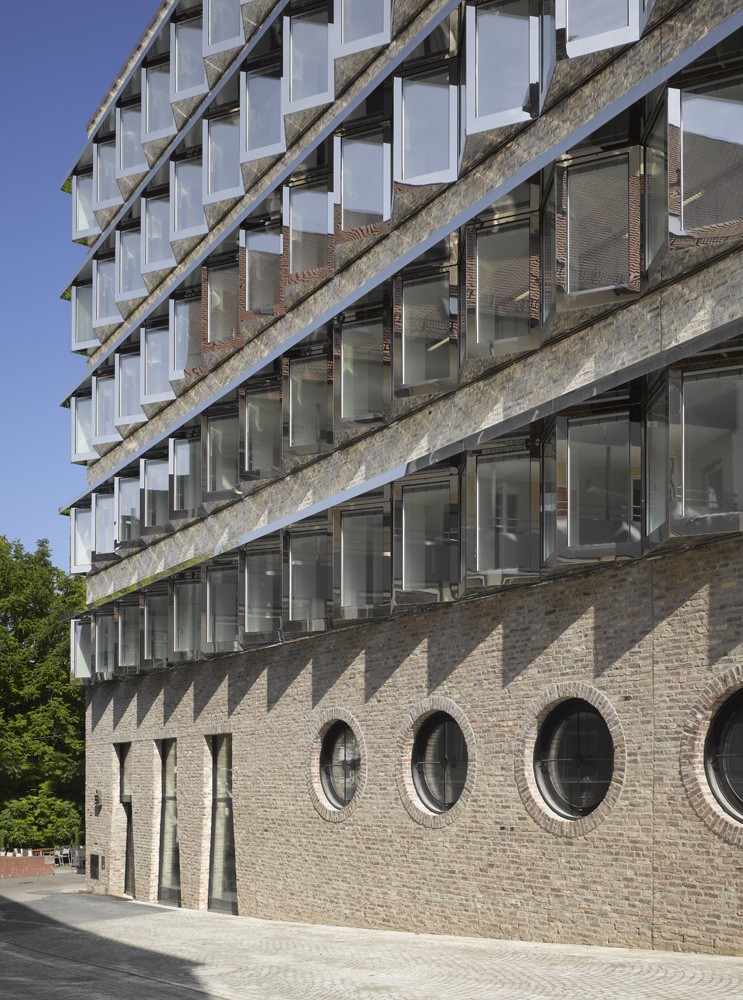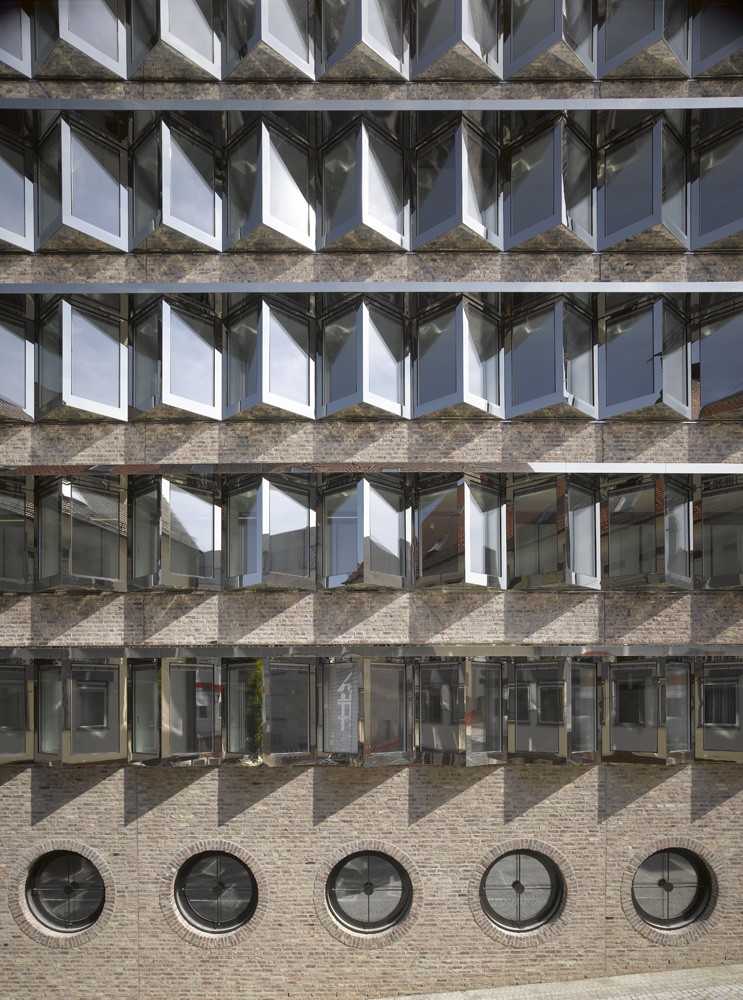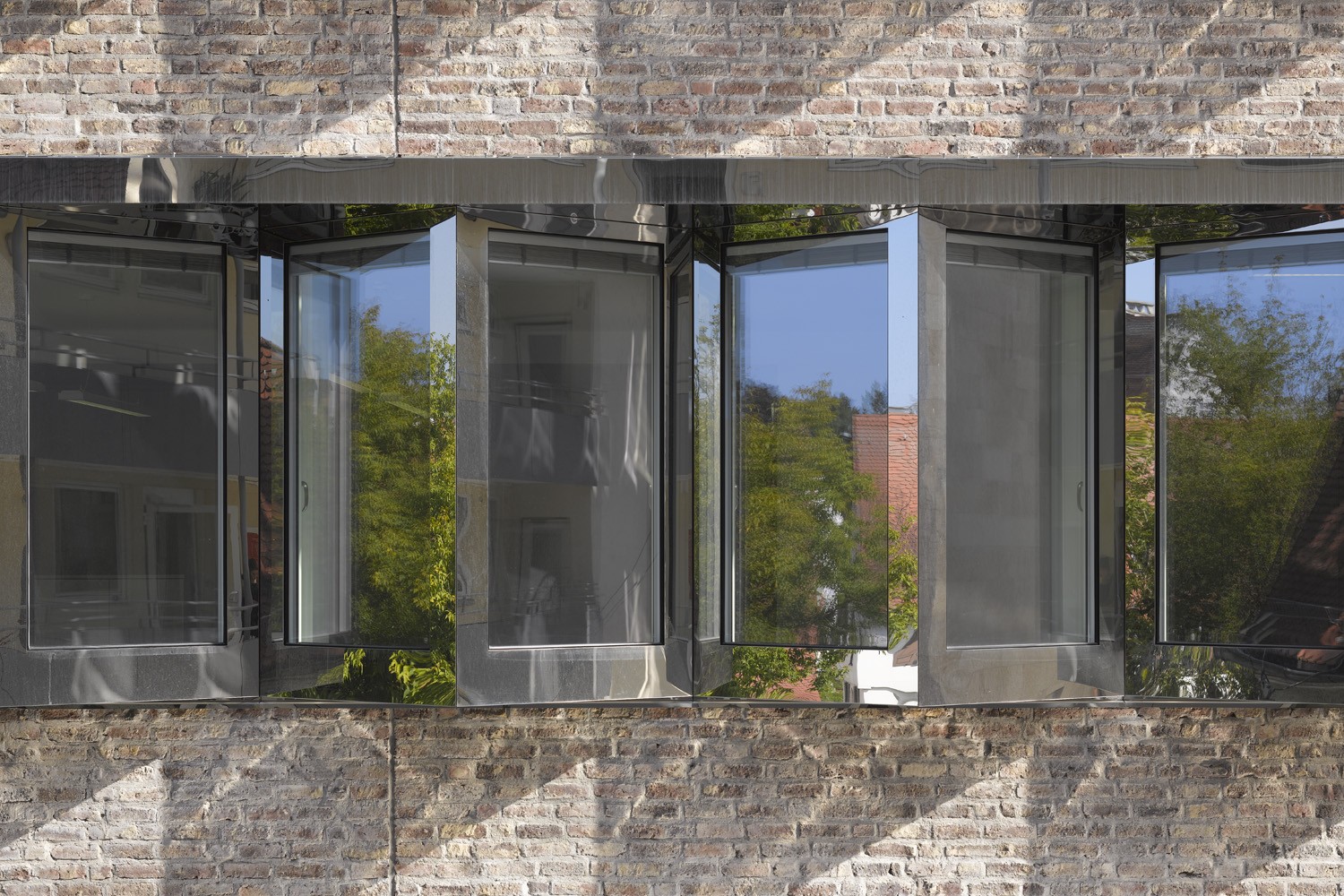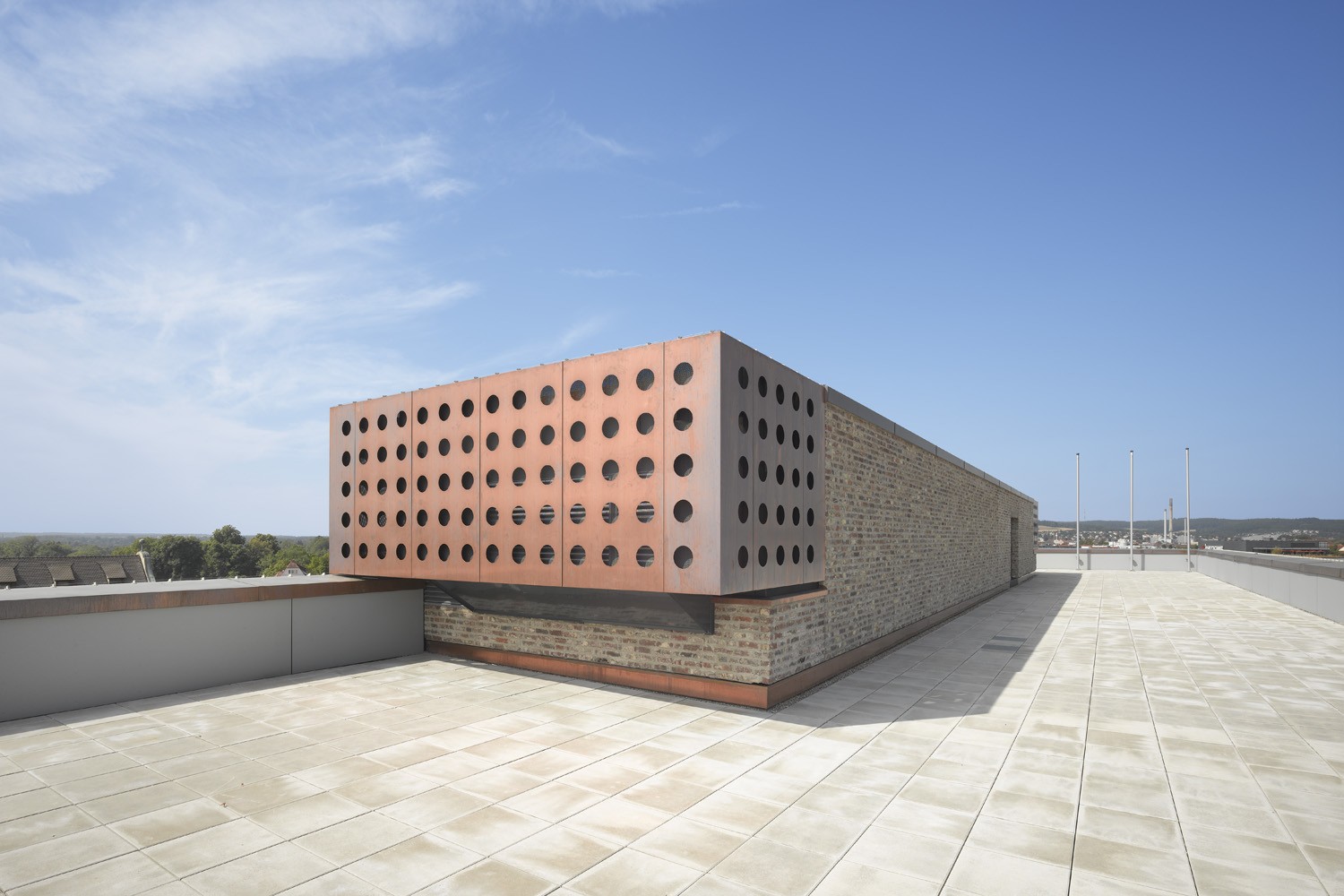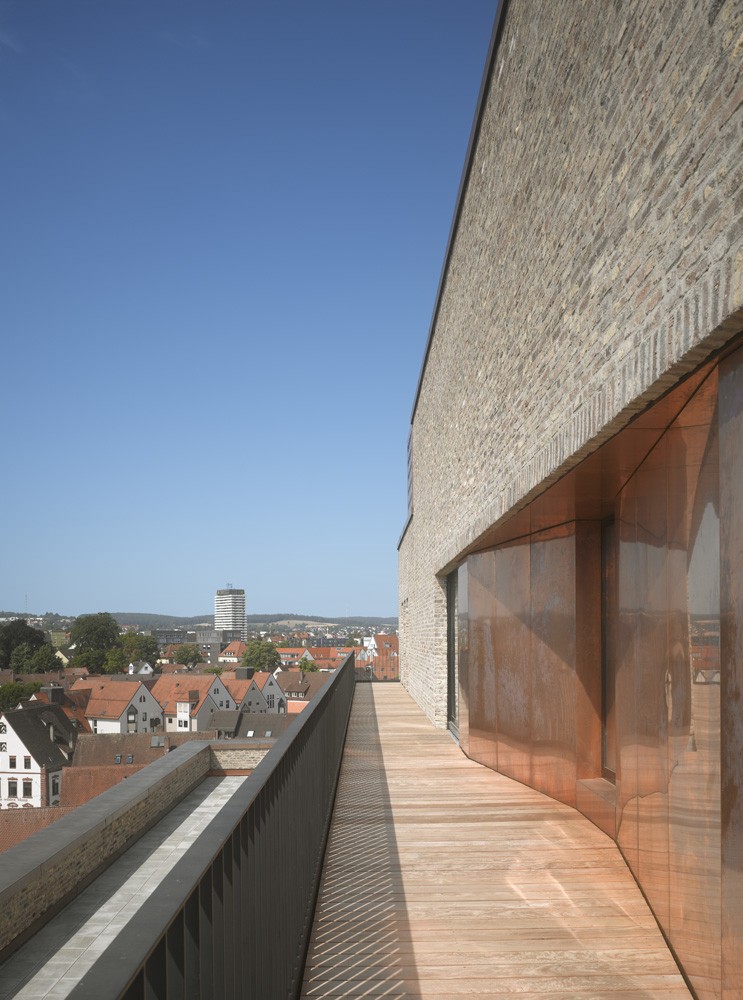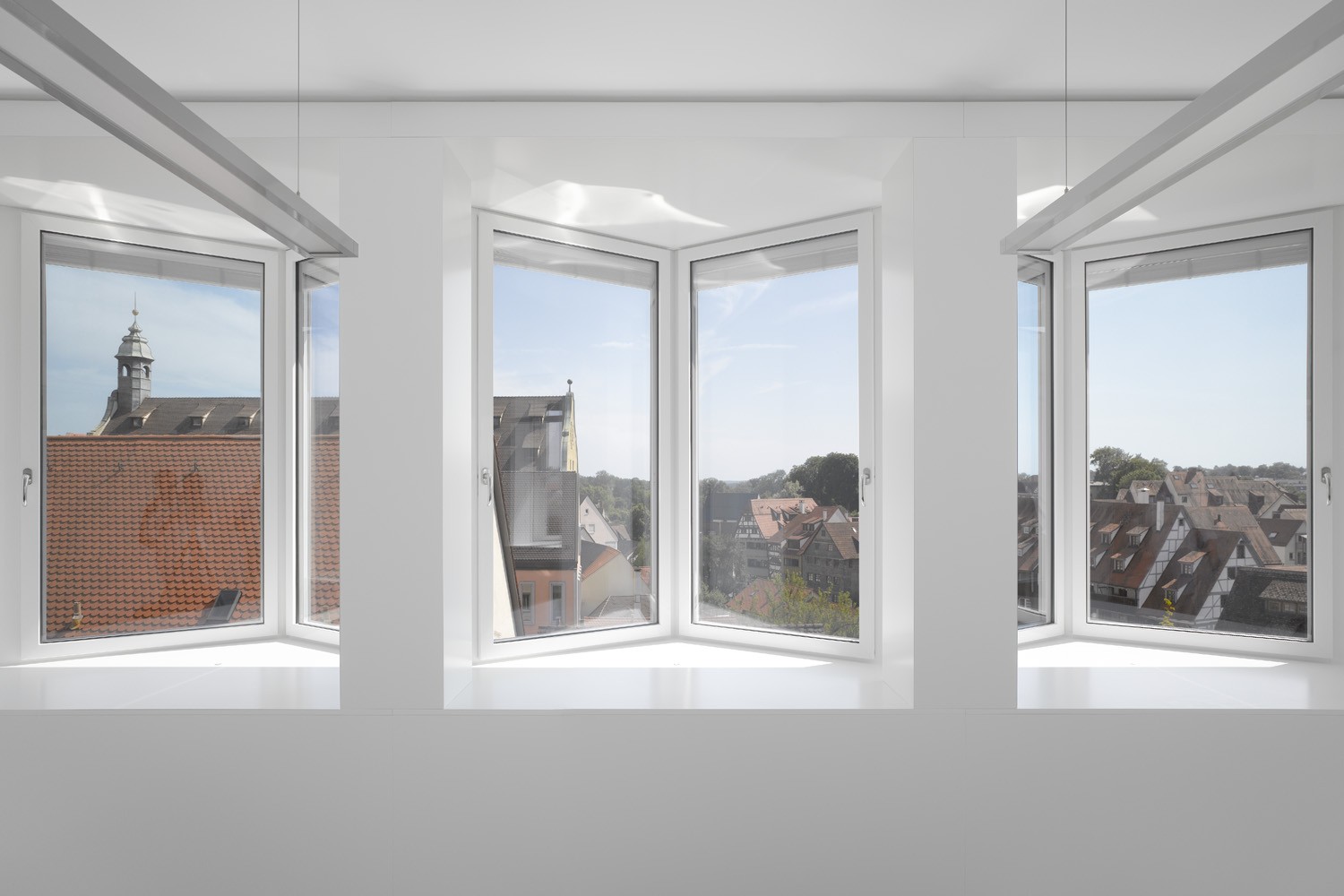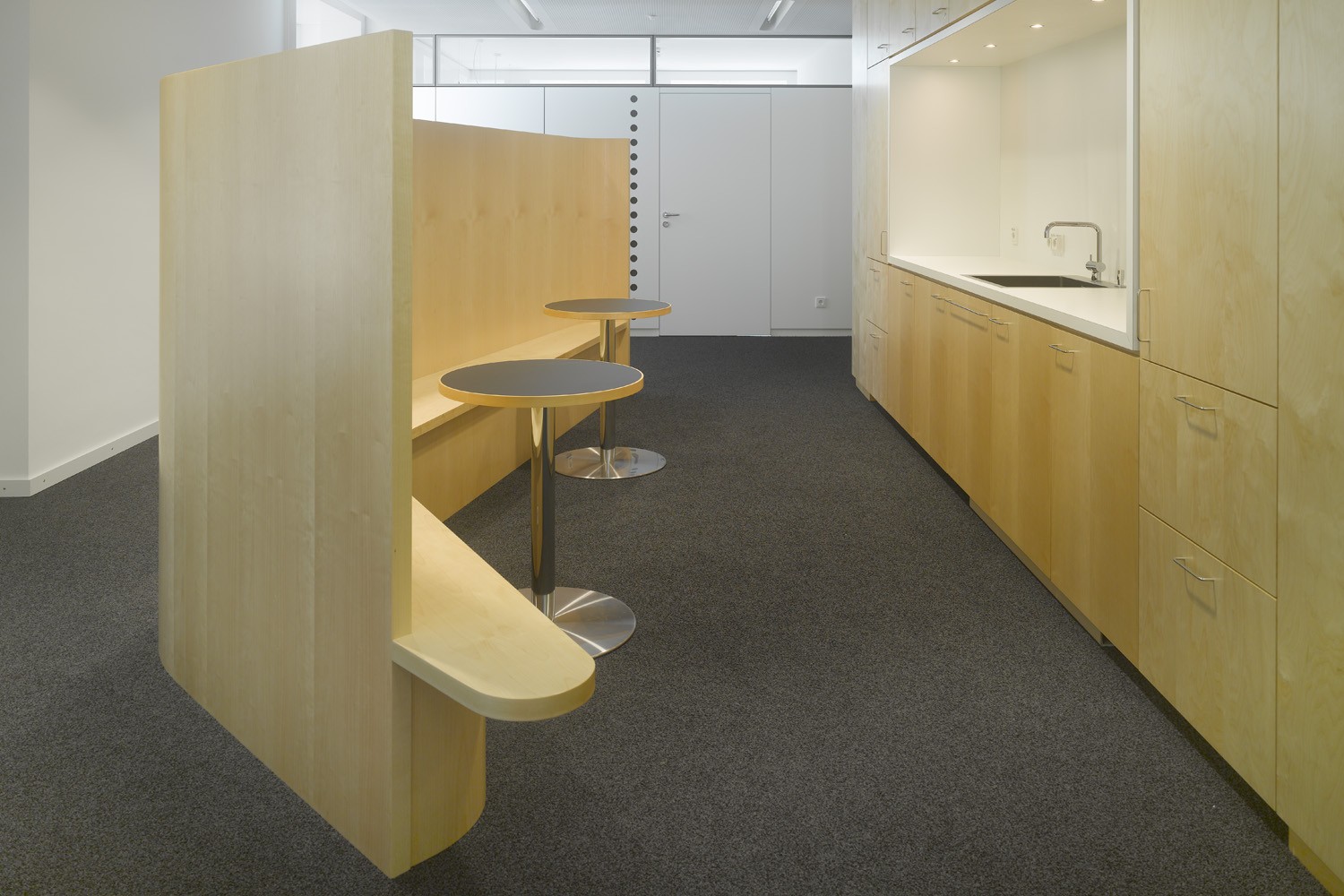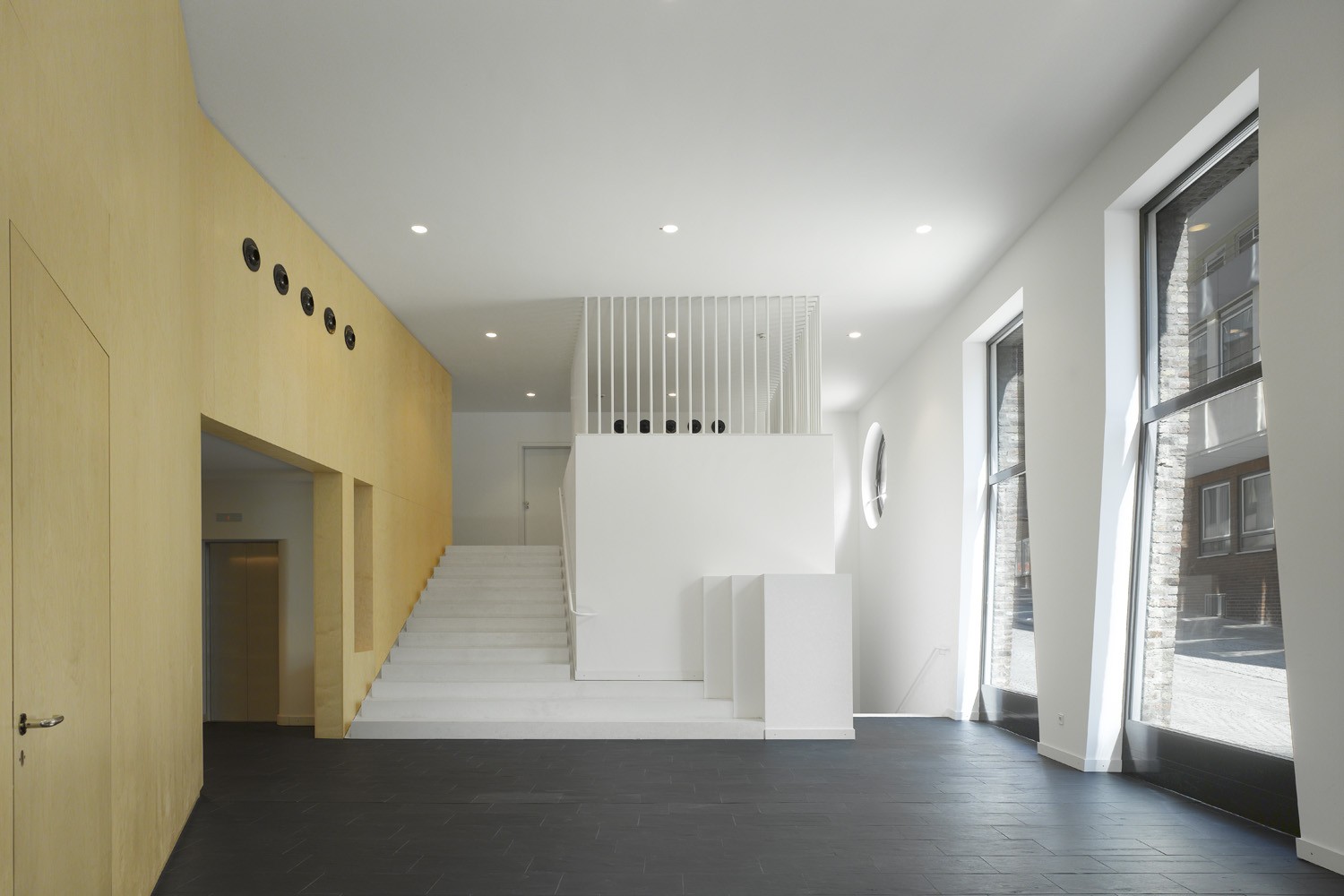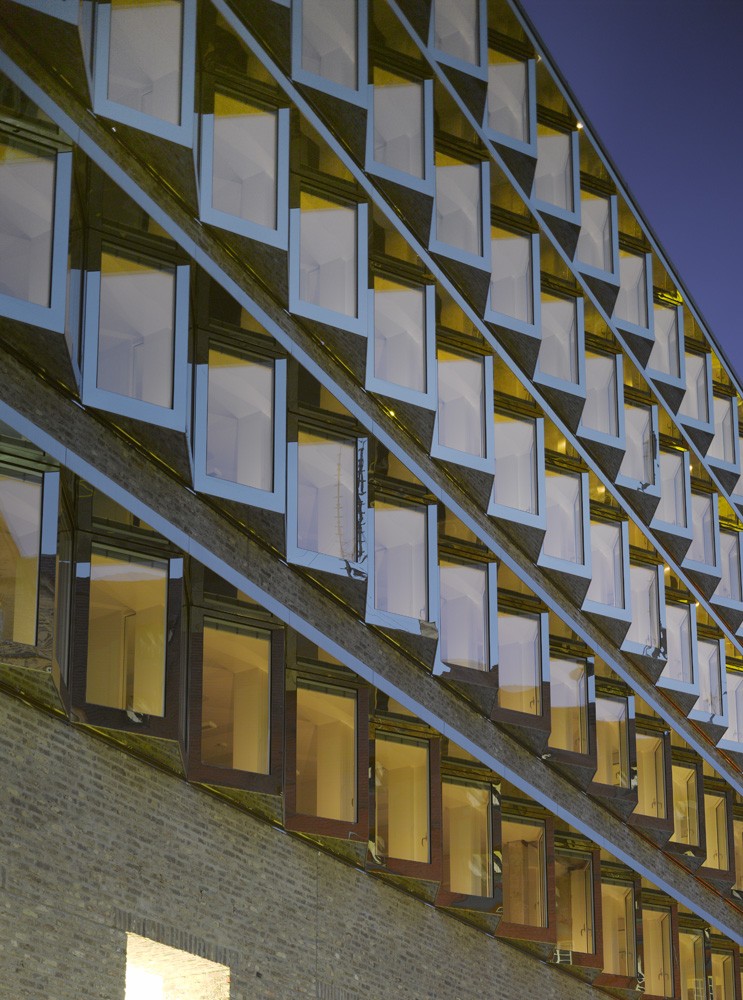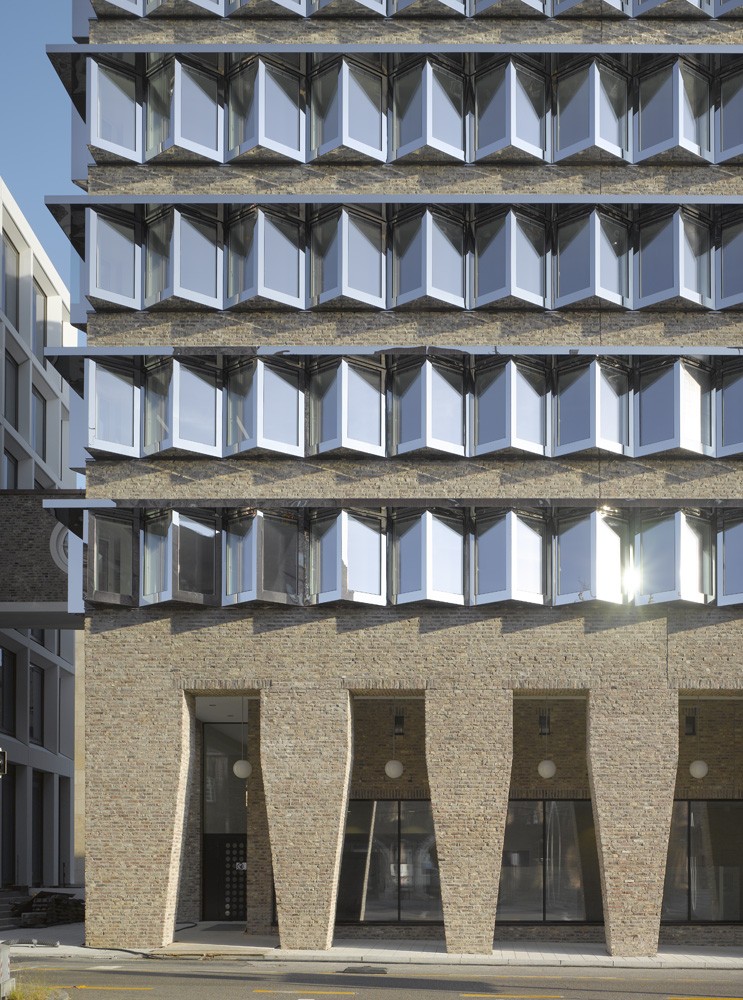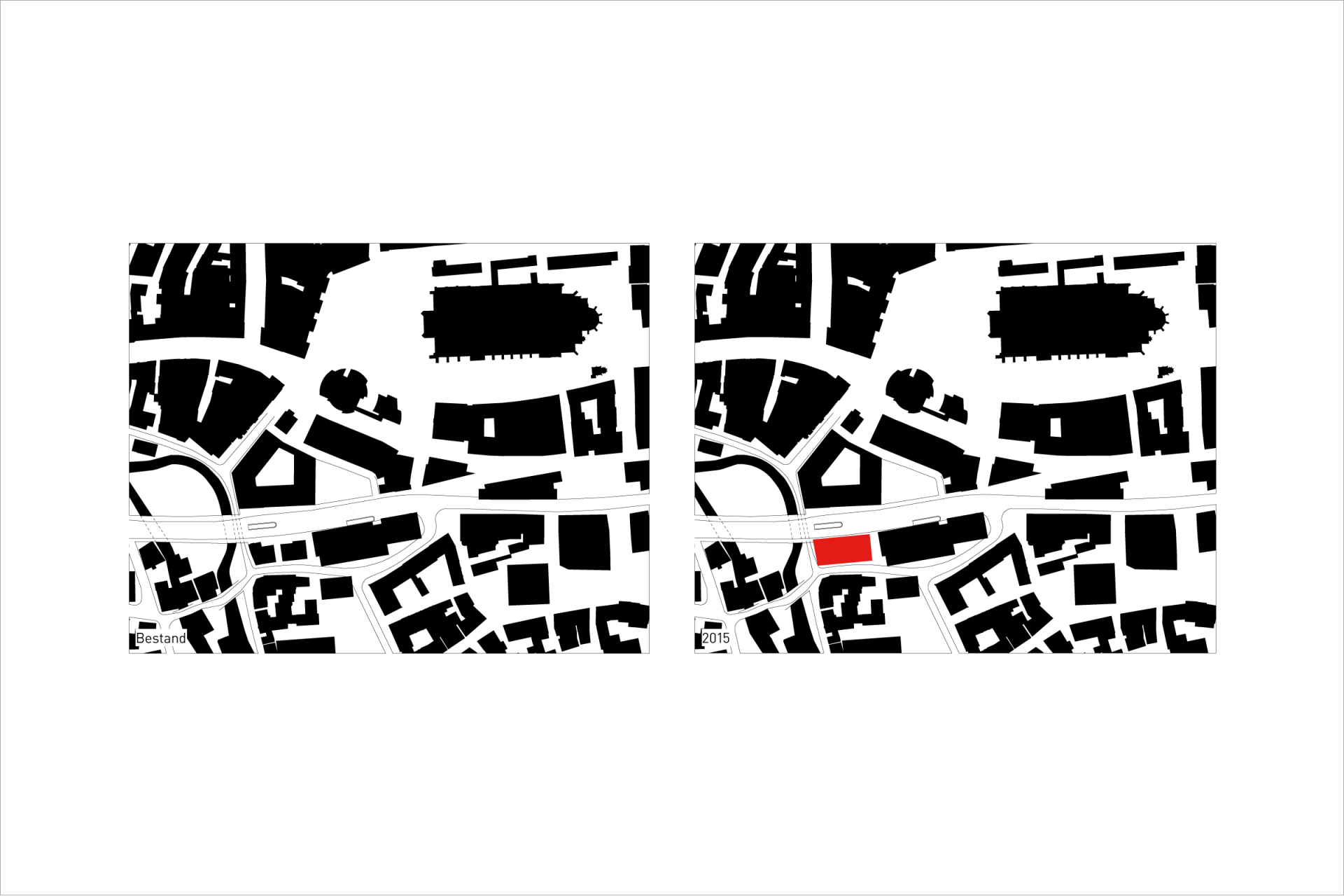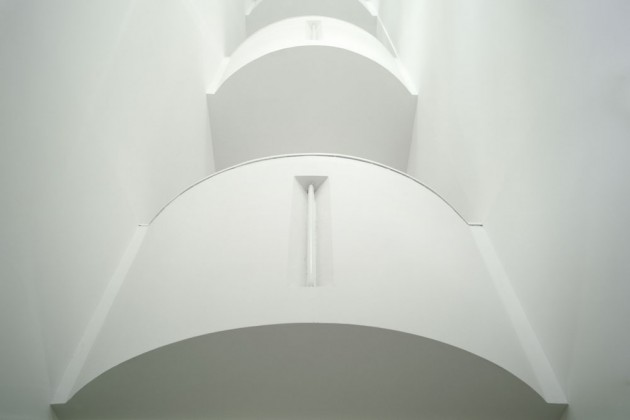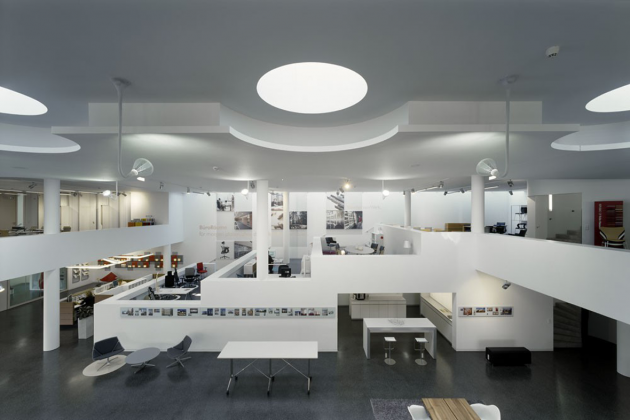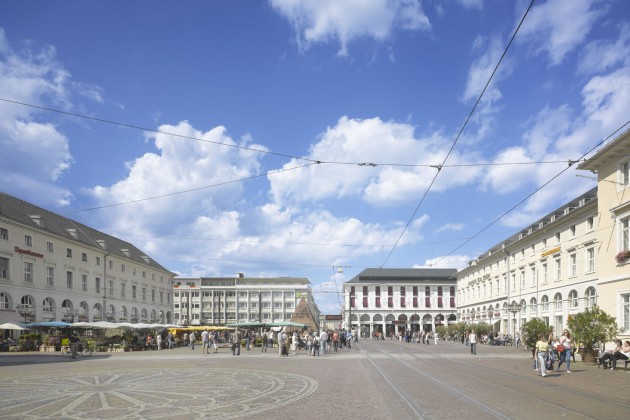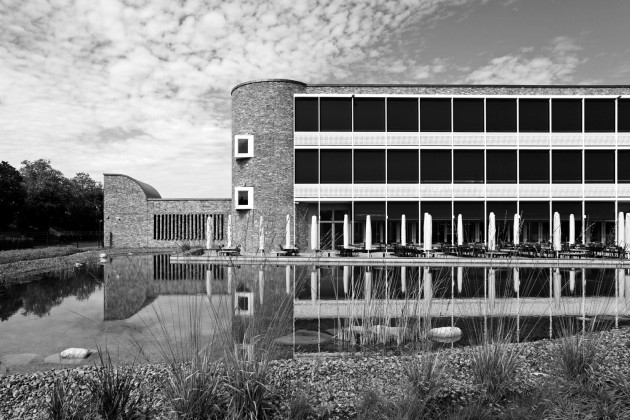Sparkasse Ulm
Sparkasse Ulm, 2015
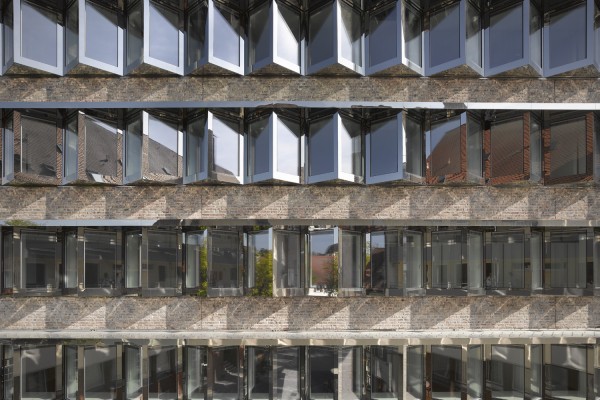

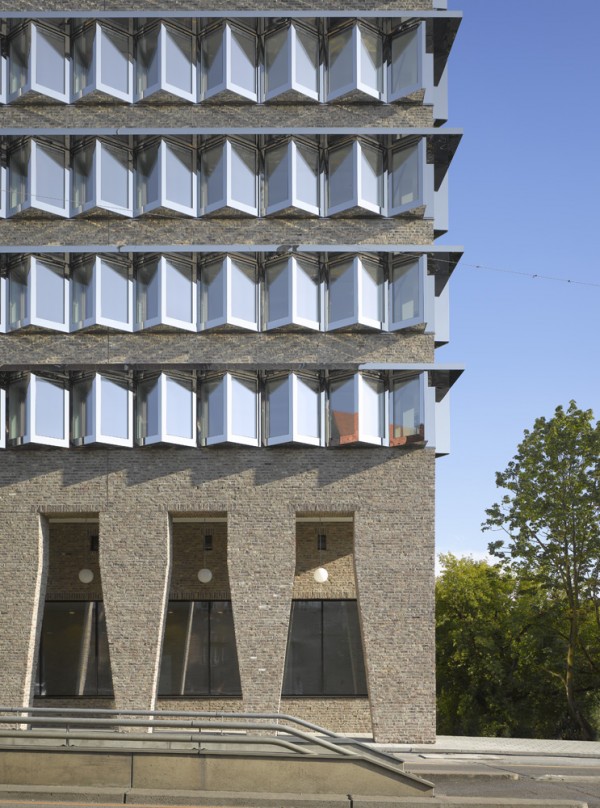
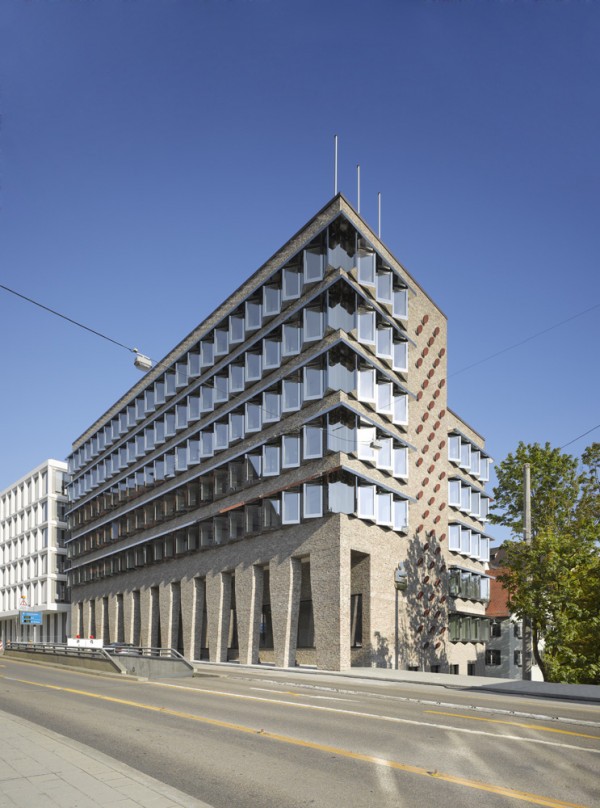
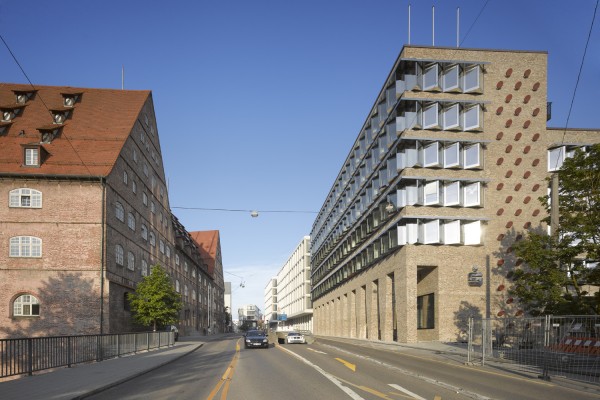

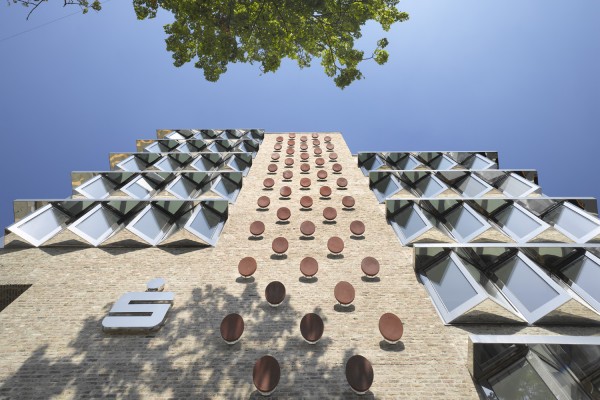
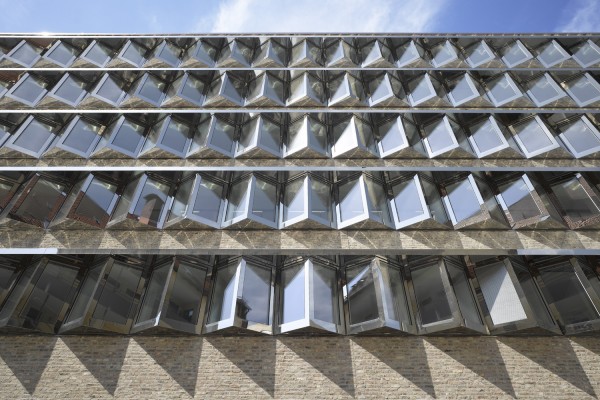
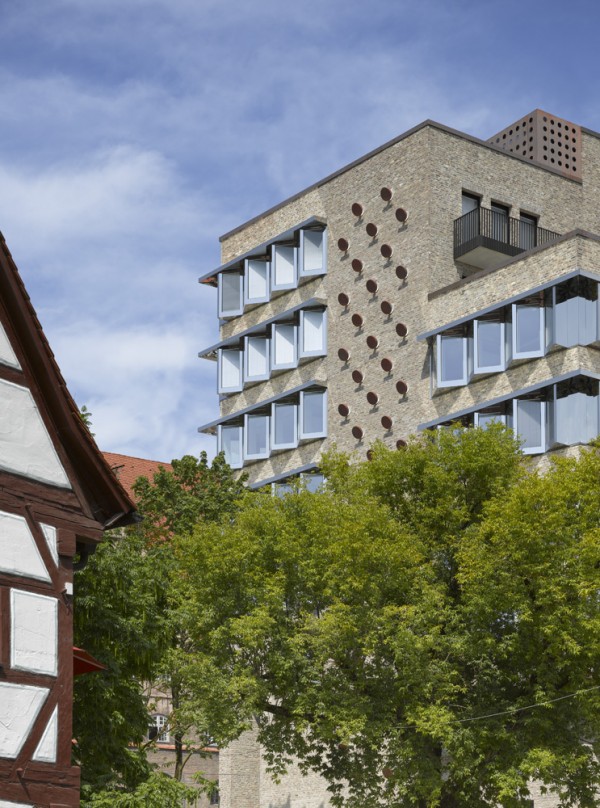
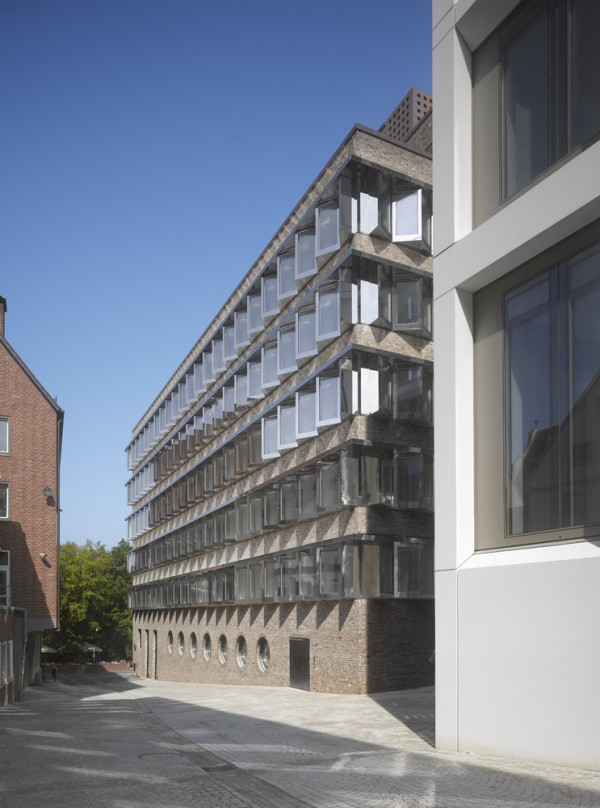


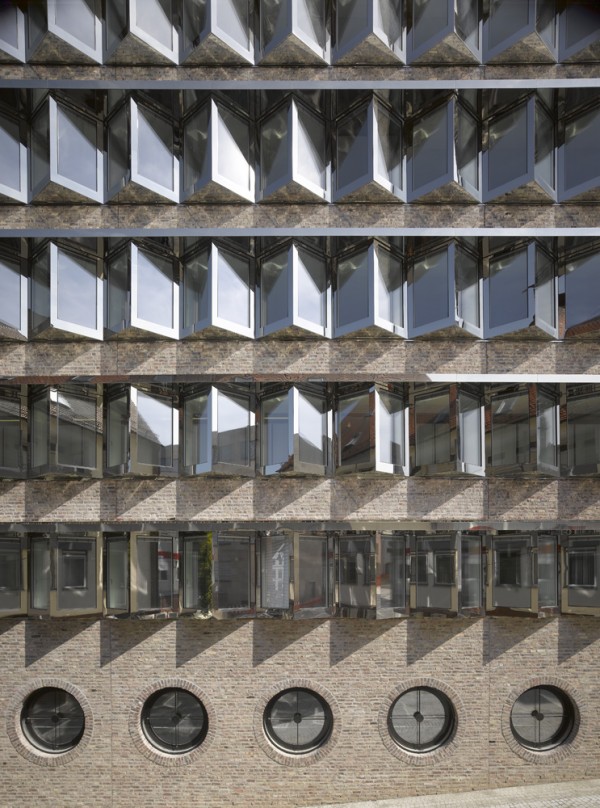
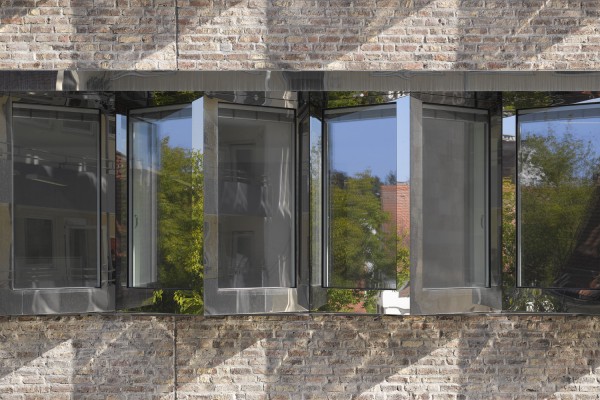


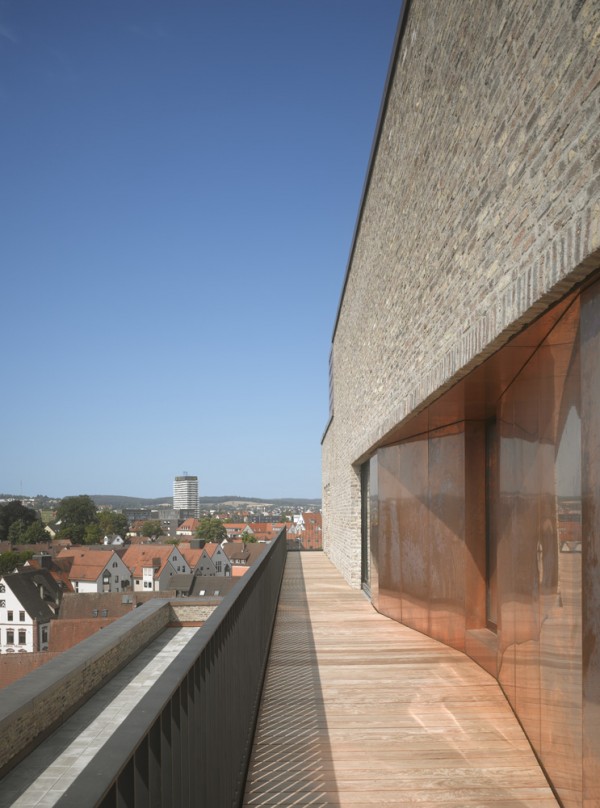
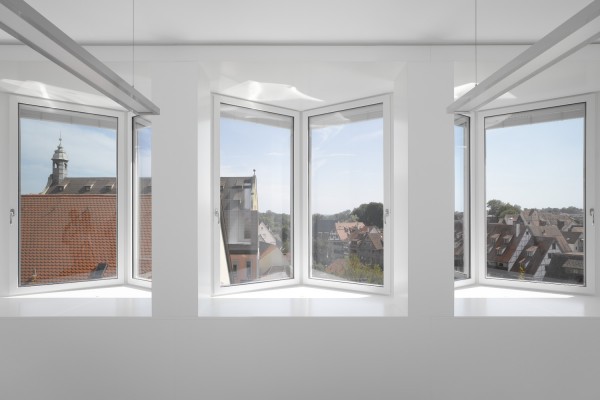
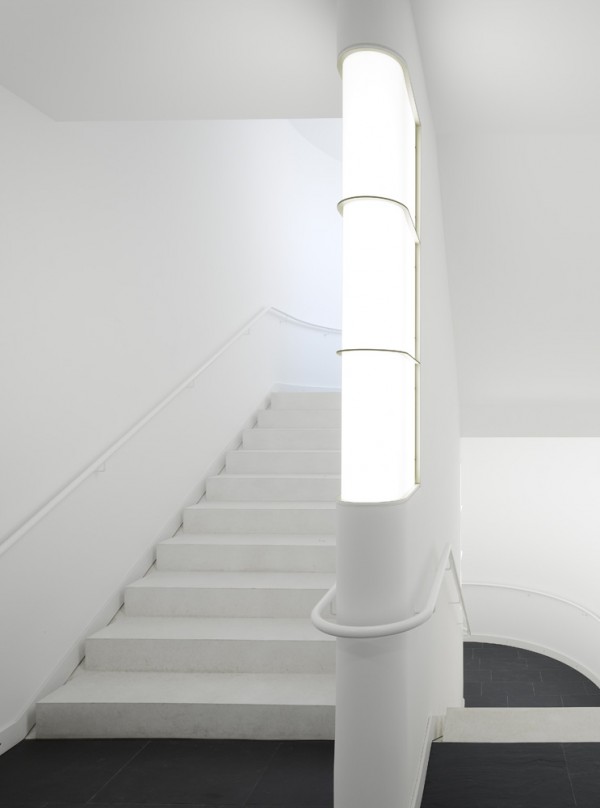

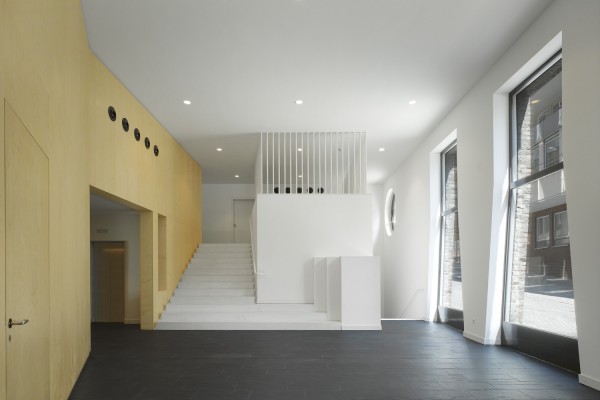
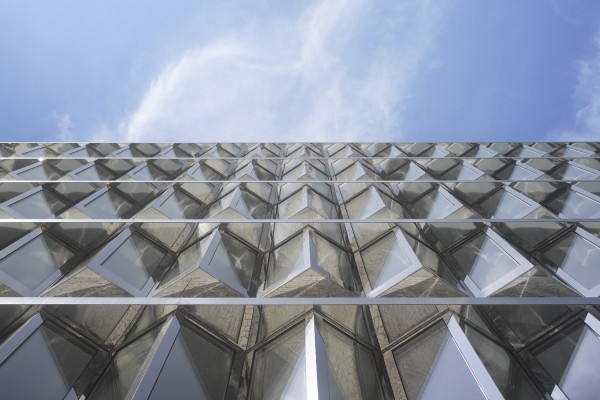
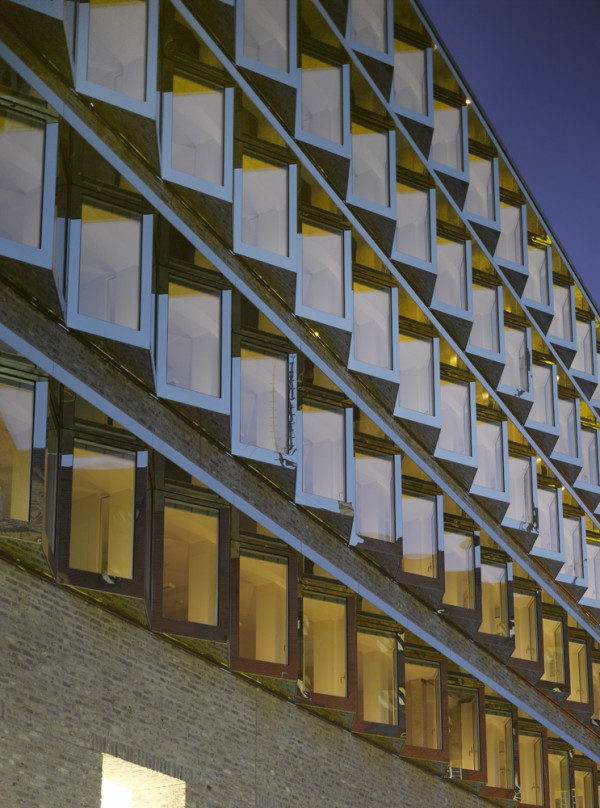

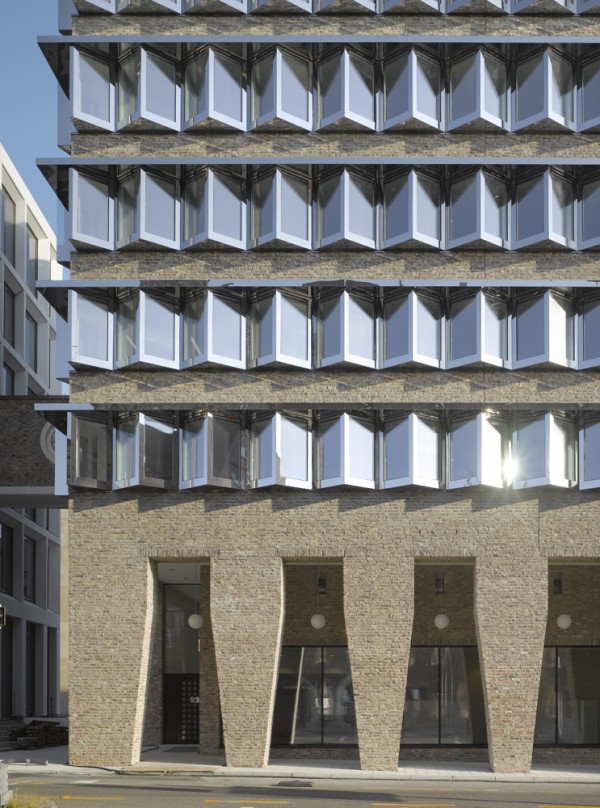
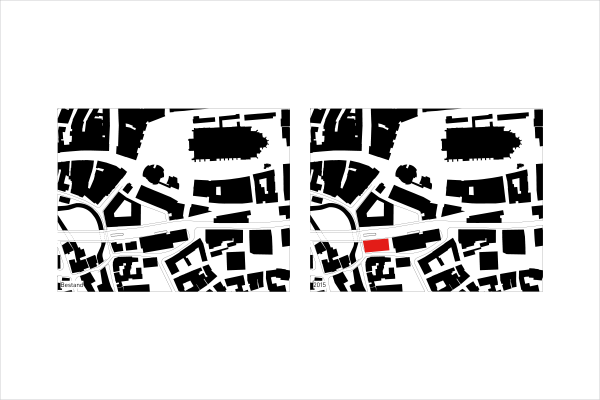
Neue Straße (New Street), a broad traffic artery carved out of the city at the beginning of the 1950s, was scaled back in the 1990s. New buildings in Ulm – one for the Sparkasse savings bank by Stephan Braunfels and another for Kunsthalle Weishaupt by Wolfram Wöhr – marked a successful return to a denser cityscape through the use of architecture with a strong commitment to modernism. The model for this cultural change was unquestionably the initially controversial but ultimately successful Stadthaus by Richard Meier, located across from the Ulm Minster.
A further element in this series was the annex administration building that the Sparkasse planned to build at the western end of Neue Straße, as an extension to its central office from the 1960s. In collaboration with the city, Sparkasse Ulm held a competition for this building in 2007, and our office submitted the winning entry.
The essential idea for our design rests upon the question of what kind of building, in terms of plasticity and choice of materials, could offer the best added value to the city on this site. On the opposite side of the street to the north is a strikingly massive building from the 16th century, known locally as the “Neuer Bau” (New Building), whose brick façade nobly marks the beginning of Neue Straße. We decided to juxtapose this richly historic place with a building that, together with the “Neuer Bau”, forms an ensemble at the entrance to Neue Straße. Apart from that, the street forms an edge which slopes downward towards the south by a good storey. The building’s form echoes this sloping terrain, which still remains legible in the setback at the penthouse level. The neighbouring buildings to the south are arranged with a typical inner-city density, so when the new building is seen from there, its real size of cannot be perceived head-on.
We liked the “Neuer Bau” and its old brick walls very much. That includes the adjoining sections of wall that extend under a bridge to cross beneath Neue Straße, leading directly to the new Sparkasse building . Hence it seemed natural to use a similar, if not even identical, material for the solid parts of the walls of the new building. Based on our past experience with used bricks, we were able to convince the client of its advantages. Not only does it establish accord with the historical façades, but the reuse of materials from demolished buildings is also an important matter in relation to sustainability and concern for material cycles. Thus two issues come together here: that of the cityscape which we have been entrusted to augment, and that of sustainability itself. We also believe that, in this way, a harmonious accord with existing historical buildings is possible without having to imitate or mimic their formal repertoire.
We contrasted the very solid character of the brick wall with zigzag bands of windows made with polished stainless steel frames. The projections and recesses come from our recognition that by folding the wall inward and outward like bay windows, the small offices have a much more pleasant atmosphere. Keep in mind that the smallest rooms permitted by the office grid have a width of 2.7 meters. Earlier projects had already shown us that such room layouts are better received. Folding the window bands also had an effect in the public realm that we welcomed. Not only because the façade of the “Neuer Bau” is reflected therein many times, but also because Sparkasse Ulm thereby demonstrates exemplary treatment of the historical surroundings while simultaneously giving expression to its modernity.
In the floor plan, the six – to seven storey building has a typical double corridor layout: offices along the perimeter receive ample daylight, and ancillary spaces, corridors and tea kitchens occupy the middle zone. The inner core is clad throughout with birch veneer and the walls opposite it are made of simple modular office partitions. A small multipurpose event room located in the second basement is accessible directly from the street. The basement has parking exclusively for bicycles. The car park in situated in the neighbouring building that was build by an architects office from Ulm for the savings bank at the same time. The basements of the two buildings are connected. And at the third floor the two buildings are connected with a walkway.
Client:
Sparkasse Ulm, Ulm
Architects:
Lederer Ragnarsdóttir Oei Architekten, Stuttgart
Team:
David Fornol, Simone Neuhold, Wolfram Sponer, Lukas Volz
Project Management:
Drees & Sommer GmbH, München | nps Bauprojektmanagement GmbH, Ulm
Structural Engineering:
Röder Ingenieure (NS West), Ulm
Electrical & Building Engineering:
ARGE Conplaning / Schreiber, Ulm
Structural physics:
Kurz und Fischer GmbH, Winnenden
Fire protection planning:
um + t Umweltmanagement und –technik, Ulm
Geology:
GeoBüro Ulm
Inspection engineers:
Stadt Ulm
Surveying:
Ingenieurbüro Wassermüller, Ulm
Safety and health coordinator:
um + t Umweltmanagement und –technik, Ulm
Site area:
880 square meters
Gross floor area:
8,187 square meters
Main usable area:
3.592 square meters – for about 200 employees
Gross volume:
24.774 cubic meters
Competition:
2008 – 1st prize
Construction period:
2013 – 2015
Location:
Neue Straße 60, D-89073 Ulm, Germany
Awards
Beispielhaftes Bauen Alb-Donau-Kreis und Ulm 2013-2019
Architektenkammer Baden-Württemberg
Winner-Auszeichnung beim German Design Award 2018
Hugo-Häring-Auszeichnung 2017
BDA Ulm Donau Iller
Nominierung für den „European Union Prize for Contemporary Architecture – Mies van der Rohe Award 2017“
Nominierung für den DAM Preis für Architektur 2017
Deutsches Architekturmuseum (DAM) Frankfurt
Publications
Lederer Ragnarsdóttir Oei 2
Lederer, Arno / Ragnarsdóttir, Jórunn / Oei, Marc (Hg.)
Jovis Verlag Berlin 2021
Arquitectura Viva
04 | 2021
Ministerium für Wirtschaft, Arbeit und Wohnungsbau (Hg):
Staatspreis Baukultur Baden-Württemberg
Stuttgart 2020
Yorck Förster, Christina Gräwe und Peter Cachola Schmal (Hg.):
Architekturführer Deutschland 2017
DOM publishers, Berlin
ISBN: 978-3-86922-549-4
11 | 2016
DBZ
9 | 2016
Detail
6 | 2016
Baumeister B5
5 | 2016
The Architectural Review
2 | 2016
Bauwelt 4
22.01.2016
Sparkasse Ulm (Hg.):
Sparkasse Ulm. Für Ulm und den Alb-Donau-Kreis.
2016
MARK – Another Architecture
12 | 2015
AIT
12 | 2015
Stuttgarter Nachrichten
10.09.2015
Neue Zürcher Zeitung
19.03.2015
Photos
Roland Halbe, Stuttgart

